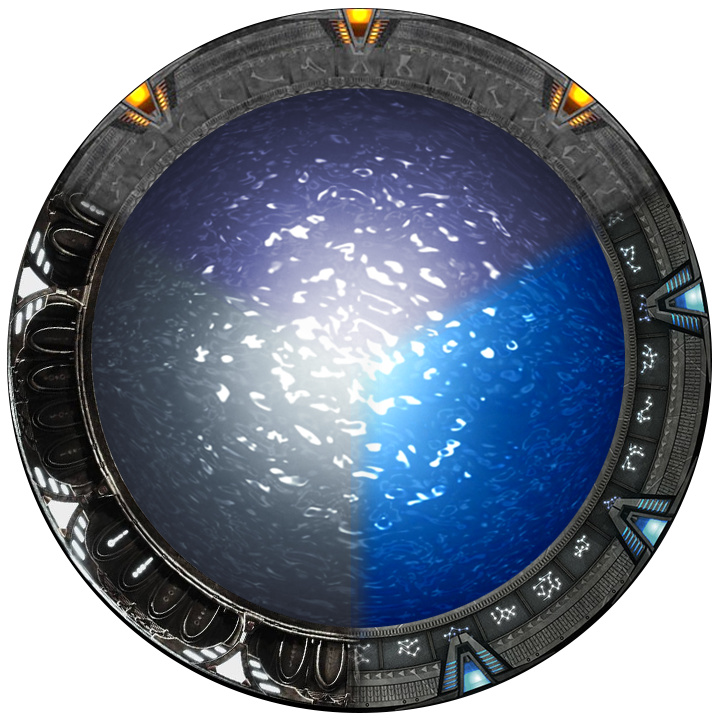- cross-posted to:
- technology@lemmy.ml
- cross-posted to:
- technology@lemmy.ml
cross-posted from: https://discuss.tchncs.de/post/22828099
USB was supposed to rule them all but it’s now a mess of standards sharing the same connector. Different speeds, voltage, charging protocols, alt modes, even the number of pins used is variable… For those asking, the thing is available on Kickstarter
If only USB-IF would do their fucking job and create actual standardized names with standard features instead of shit like USB 3.2 Gen 2x2
like USB 3.2 Gen 2x2
Did you see that the newest version is called USB 4 2.0? lol
That is very very explicitly just the name of technical the specification. Its a documents for people who design usb devices. The tech media failed us by reporting on it like they did.
The spec also explicitly tells us that we should refer to the usb cables/ports/devices as e.g. “USB4 40Gib” or “USB 3 20GiB”. So in fact we have easy to understand names but only a few manufacturers actually print that on the boxes or cables.
It could have been USB 4 Spec 2.0, couldn’t it?
That’s a really good idea! So good in fact that that is actually what they did call it! https://www.usb.org/document-library/usb4r-specification-v20
This 100%. Wi-Fi Alliance did it right ditching the standard names like 802.11ac and 802.11ax and going to simple names like Wi-Fi 5 and Wi-Fi 6. Everyone knows 6 is better than 5 so there’s no confusion.
USB-IF needs to do the same thing, and also stand up a little bit to the manufacturers who want to build the cheapest possible products. Set a couple of certification levels. Like level 3 cable supports 30 w and 480 Mbps USB 2.0, level 4 cable supports 100w and 2 gbps, level 5 cable supports 100w and 10gbps, level 6 cable supports 240w and 20gbps etc We don’t need infinite variations of power and data capability. It just confuses customers. But customers will understand a level 5 cable is better than a level 4 cable. And if the device says you need a level 5 cable for full capability, they will understand a level 4 cable isn’t good enough.
And then relabel all the old standards when they create a new one so every generation you need to figure-out what al the new names mean.
They actually renamed the types which makes everything even more confusing
That U is becoming more and more a joke…
It’s very universal, you can plug it into any port that is USB C, whether it does what you ask it to or not is a whole other story.
I want this device, can’t expect every cable to be thunderbolt grade.
A Chinese projector light uses the same port for charging, can’t expect a thicc cable there
The most expensive Thunderbolt 3 USB-C cables let you get lengths of 2 meters + at 40 Gbps but only hit USB 2.0 480 Mbps speeds if used as a regular USB C cable.
That U is becoming more and more a joke…
Importantly, it’s universal compared to having parallel and Serial and PS/2 and the old joystick port and FireWire and whatnot.
How annoyed everyone is/was about Lightning sticking around should be pretty good evidence of how universal USB is. Especially since Lightning still used USB-A or USB-C on the host end.
Sure there are different versions of USB, but they will still work. They might not work at their best if they don’t have compatible higher-end features, but they’ll still communicate.
but where is the diy version that we actually want that uses arduino or esp or something with all the details on a git readme?
Yeah, no. They’re trying to sell them for 89$
Are they insane? I already have a free tester – the device I want to use the cable on. I would pay maybe $15 for this, but perhaps I am not part of the target market
Imagine the world if USB cables where properly labeled.
Fuck Kickstarter.
Why?
90% of the projects are scams and have been for years.
Guess I’ve only been supporting the 10%
…so which website should I use for my next scam as a substitute for Kickstarter?
IndieGoGo
Solar Freakin’ Roadways!
That’s even worse!
There’s only one thing I can think of that actually succeeded out of Kickstarter, and that’s the Pebble watch. Still the best smartwatch ever made imo
Eh, I have a few things from Kickstarter that were successful. Exploding Kittens is probably the most successful one of all the ones I own.
Oh, I didn’t know that started on Kickstarter
The most successful Kickstarter in history (so far) was Brandon Sanderson’s “Secret Project.” He had written four novels during the pandemic which were not written for or promised to any publisher, so they did a Kickstarter to publish them through Dragonsteel, his company, and added on things like monthly loot boxes, digital editions, etc.
Raised over $40 million dollars (some of which they used to fund almost every publishing project on Kickstarter at the time, which was pretty cool).
Other than some snafus with manufacturing (getting the fancy colored pages from the printer to the binder took longer than anticipated, so the first book didn’t reach people until a month or two late, and instead they moved up the boxes planned for February to January, March to February, etc.) the delivery went really well. I have my four high-quality hardcover copies displayed proudly in my living room, and I have various Cosmere-related merch all over the house.
Of course, Sanderson already had an audience and a company. The Kickstarter let them do something they hadn’t done previously, but he obviously would’ve been able to publish those books through one of the publishers he works with regardless. Still, it was fun to be a part of community funding for something I was excited about.
Good to know, thanks
I’d pay $30-40 for one, but the asking price now is too much.
deleted by creator
I have that model… so weird.
I have one of those, it may pass as the great grandfather ;)
I guess it’s neat that it’s kinda like whatever this guy is called https://www.amazon.com/gp/product/B0CF95VL2Y plus the power-z tester built into one. I wonder if the power-z could be updated via software to do cable pinout testing.
What I’d really like to see is a device that actually tries to send 40gbits of data down the cable and makes sure it comes through clearly and provides a signal integrity reading. The only devices I’ve seen that do that are essentially just oscilloscopes and signal generators.
Hmm… This looks like something that could just work as software on a PC, or as an app on a phone. I’d be surprised if it doesn’t already exist.
You need both ends of the cable connected, so the phone is out. And even on PC, I’m not sure if it would work with the USB drivers in-between the software and the actual ports
i know the cable is a piece of shit because i plug it into my camera and it doesn’t do anything
Yeah, the whole experience of going from lightning cables and mini display port and such has been less than overwhelming. I eventually had to buy a USB C from the Apple Store to get one that actually did 100W power instead of just lying about it on the box.
Even then, Apple USB-C charging cables only hit USB 2.0 480 Mbps speeds.
Yes because being able to handle 5 amps does not mean it having the USB 3+ lines, but only V+, D+, D-, and a CC line. A cable that supports 5 amps has a build in chip (eMarker) that is powered by the other CC pin (which is not led through the cable) that is in that case called Vconn. For fast data, you have two additional pairs of data wires with better isolation from interference (like in HDMI, DP, Ethernet etc.) How well those insulation work is rated with the 5, 10, 20, 40, 80 gb/s spec. Theoretically, a good 10gb/s cable may be able to handle more bandwidth. Additionally for thunderbolt, you as well need a chip in the cable for some stuff I have not learned yet.
From what I know, the chip in the cable is for active cables to get lengths of 2 meters plus, but comes at the cost of USB speeds when used for non-Thunderbolt applications. Shorter passive cables generally can hit 40gbps for TB and 20 gbps for USB.
Interesting. Luckily I only needed it to power my docking station so I can plug in power, ethernet, USB and monitor with one plug so not an issue for me luckily.
This is nothing new. You can buy these USB cable testers on Amazon or directly from Alibaba. They just put some fancy visualization on top so you don’t have to look up what the individual LEDs on the tester mean.
As others have generally noted about Kickstarter, this is just another scam with cheap Chinese gadgets.
The thing is from Austria though?
Will this just become obsolete the next time they update usb c to support something new? A tester that goes out of date as quickly as the cables it’s testing feels pretty pointless to me
It doesn’t loose its ability to tell all the variations up to the point in time.
Aren’t we all going to die one day? Doing anything to improve one’s life seems pretty pointless to me.
Yeah, but I take it you’re not planning on dying next year…
You don’t know me
Username definitely checks out
I plan to live forever or die trying
For the switch to 240W USB-C it may become obsolote but at least you will know they are 100W and 10gbit capable?
Why the heck does the “cross-posted from” link direct me to BDSM content on Jerboa? 😲
Works fine on browser - seems like a Jerboa issue
I’m also using jerboa and got no issues
Same. Super disappointed
Also works fine on Boost, links to a post on !technology@lemmy.ml
Maybe you should open an issue about it?
Huh, same here, that’s odd
It’s a bug in your client, and the post it gets is related to your instance. That’s why the other person that says they get the same incorrect post is from your same instance.
AI?
deleted by creator
I still don’t know if a USB micro or mini is the one that charges my PS4 controller
It’s Micro-B, to be specific.
I didn’t realize that what I know as Mini-USB and Micro-USB were really Mini-B and Micro-B until embarrassingly recently, when I saw Nostalgia Nerd’s video on USB. I just never encountered Mini-A and Micro-A, all of my mini and micro cables were standard A on the host end.
I worked IT and didn’t realize this. (Admittedly it was IT for a small, shitty company. And my degree is in development, not hardware.)
I had a similar experience, and didn’t realize it until I read your comment here. Thanks for sharing!
Mini for PS3 controllers, micro for PS4 and most android phones that were made prior to about 4 or 5 years ago.
And C for PS5? 😄 funny how they have generations in line with USB IF














